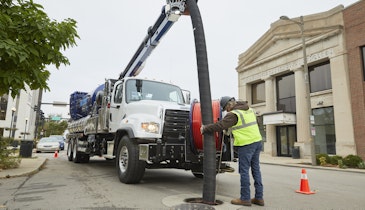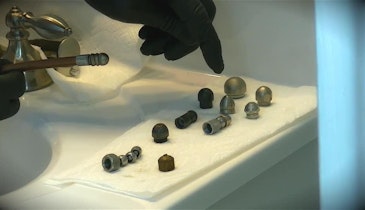Interested in Safety?
Get Safety articles, news and videos right in your inbox! Sign up now.
Safety + Get AlertsFailure to wear breathing apparatuses while repairing a sewage leak in the basement of a water treatment facility last year cost the lives of two maintenance mechanics from Wichita Falls, Texas.
Daniel Arredondo and David Sheppard were trained in the use of personal protective equipment and safety protocols. Plant officials warned the men of a gassy smell in the area. They entered the basement wearing self-contained breathing apparatuses, but it would later be found that the pressure in their air tanks was low.
Confined spaces, such as basements, pose health and safety risks for workers and rescuers exposed to hydrogen sulfide — a colorless, flammable, extremely hazardous gas that smells like rotten eggs. The National Institute of Occupational Safety and Health considers confined spaces to be those with limited entrances and exits, poor ventilation and “not intended for continuous worker occupancy.”
“Because it’s heavier than air, H2S can collect in low-lying and enclosed spaces, such as manholes, sewers and underground telephone vaults. Its presence makes work in confined spaces potentially very dangerous,” explains Wes Scott, director of consulting for the National Safety Council.
Dave Donohue — owner and principle partner of Mid-Atlantic Emergency and Safety Consultants, Hagerstown, Maryland — says, “Any space where there is organic matter decomposing, including sewers and solid-waste storage areas, can have H2S present. Caution should be taken before entering those areas,” he advises.
The health effects of H2S depend on how much of it a worker breathes and for how long. Effects range from mild (headaches or eye irritation) to very serious (unconsciousness and death).
Paul Moore, chief, fatality investigations team, NIOSH Division of Safety Research, says “H2S can be smelled at low levels, but with continuous low-level exposure or at higher concentrations you lose your ability to smell the gas. At high concentrations, your ability to smell the gas can be lost instantly.”
Once concentrations around 150-200 ppm are reached, the olfactory nerve becomes paralyzed after a few breaths. So, the odor is no longer detectable. “By 1,000 ppm, a single breath can cause immediate collapse and death,” Donahue says.
Employers must provide respiratory and eye protection and fire-resistant clothing if engineering and administrative controls cannot reduce H2S below OSHA’s permissible exposure limit. “Employers must also complete a PPE hazard assessment and equipment selection process in accordance with the OSHA regulations before beginning work activities,” Scott says.
His recommendation: “For exposures below 100 ppm, use an air-purifying respirator with specialized canisters/cartridges for H2S. For exposures at or above 100 ppm, use a full-face pressure-demand SCBA with a minimum service life of 30 minutes or full-face pressure-demand supplied-air respirator with auxiliary self-contained air supply. Exposures at or above 100 ppm are considered immediately dangerous to life and health,” he stresses.
If the gas cannot be removed, use appropriate respiratory protection and other necessary PPE, rescue and communication equipment. Atmospheres containing high concentrations (above 100 ppm) are considered immediately dangerous to life and health, and SCBA is required.
Donahue notes, “If conditions in the confined space are not compatible with life, the incident shifts from rescue to recovery with steps needed to reduce hazards as the incident is no longer time-critical. It may be possible to change the atmosphere from toxic to safe using ventilations systems, he suggests, provided conditions have gone from high- to low-risk.
He ticks off a list of safety precautions that workers and rescuers should take to protect themselves, including appropriate detection equipment, such as meters to test for gases; PPE, such as respirators; a method to communicate in and out of the confined space; risk assessment for survival/actions to be taken; and command structure and incident action plan. He says rescue workers should “follow the instructions on the site safety plan, including continuous air monitoring and proper personal protective equipment.”
Generally, there should be a method to monitor the atmosphere for hazards. Lighting should be provided. The need to change the atmosphere, using fans or other ventilation systems, may also be needed, Donahue adds.
Moore says the same safety protocols for confined-space workers also apply to rescuers. “Rescuers should be aware of the hazards associated with specific types of confined spaces” and follow the standard on technical search and rescue incidents offered by the National Fire Protection Association.
Rescuers must be trained in rescue, CPR and first aid, and the specific H2S environment. Moore advises notifying emergency medical personnel and following the emergency action plan. “Always protect yourself first. Then, assist any victims in an H2S emergency. Above all else, follow the company’s policy on rescue. Never, ever, rescue unless you can do so right away!”
Almost half of the workers who die in confined spaces each year are would-be rescuers, Donahue notes. “They need to have the training, equipment and resources (including personnel) to effectively enter and rescue persons trapped in confined spaces.”





